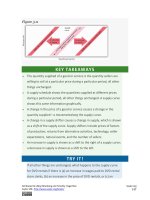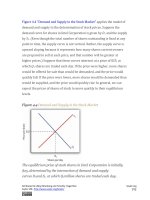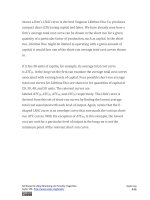Authors libby rittenberg 805
Bạn đang xem bản rút gọn của tài liệu. Xem và tải ngay bản đầy đủ của tài liệu tại đây (444.08 KB, 1 trang )
15.2 Financing Government
LEARNING OBJECTIVES
1. Explain the ability-to-pay and the benefits-received principles of
taxation.
2. Distinguish among regressive, proportional, and progressive taxes.
3. Define tax incidence analysis and explain and illustrate the conditions
under which the burden of an excise tax falls mainly on buyers or
sellers.
If government services are to be provided, people must pay for them.
The primary source of government revenue is taxes. In this section we
examine the principles of taxation, compare alternative types of taxes,
and consider the question of who actually bears the burden of taxes.
In addition to imposing taxes, governments obtain revenue by
charging user fees, which are fees levied on consumers of governmentprovided services. The tuition and other fees charged by public
universities and colleges are user fees, as are entrance fees at national
parks. Finally, government agencies might obtain revenue by selling
assets or by holding bonds on which they earn interest.
Principles of Taxation
Virtually anything can be taxed, but what should be taxed? Are there
principles to guide us in choosing a system of taxes?
Jean-Baptiste Colbert, a minister of finance in seventeenth-century France,
is generally credited with one of the most famous principles of taxation:
Attributed to Libby Rittenberg and Timothy Tregarthen
Saylor URL: />
Saylor.org
805









